Consistently over the course of a month, we shared with you our observations regarding modern smart scales, or analyzer scales.
This gave rise to lively discussions, of which we tried to choose the most appropriate questions in order to answer them again and again. Today we decided to summarize all of this, and this time to ask the counter questions to the readers. Our arguments in favor of weights-analyzers are based on our own measurements, comparisons of weights with each other, comparisons in clinics and common sense.
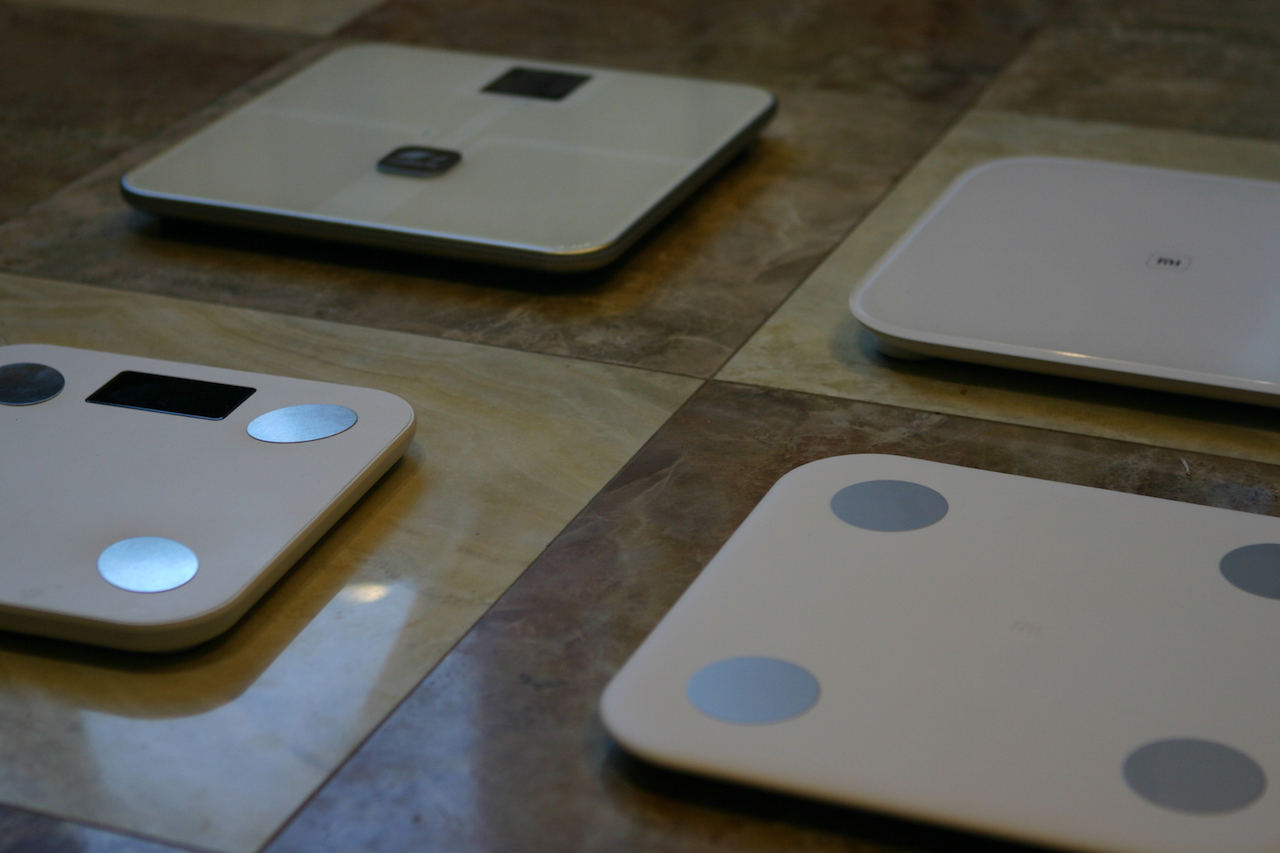
But first, to attract attention, we’ll show you a little sign:
| Data | Scales 1 | Scales 2 | Scales 3 |
|---|
| Bone mass | 2.6 | 11.2 | 2.5 |
And all this data is correct and correct. How this happens and what happens else - inside.
What should measure scales?Scales must accurately determine the weight. However, the construction of the word "exactly" in the absolute is a rather silly idea. What to compare? Where are the reference scales?
Yes, there is such a category of scales, which can be called “clinical”. Their weighing bowl is installed on a certain organized base, which must be set by level.
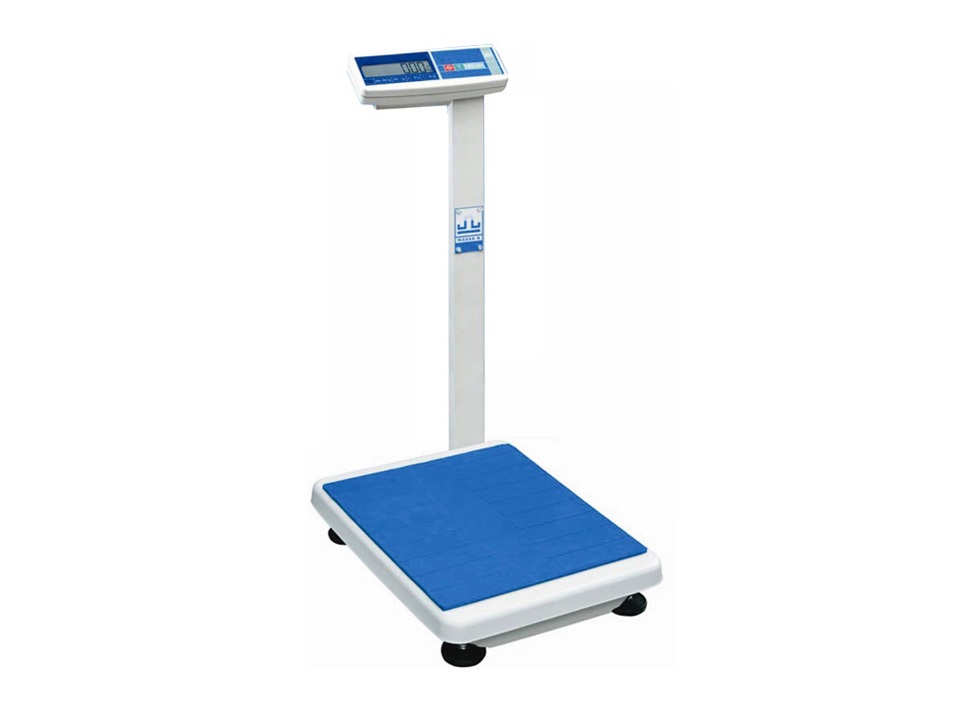
As a rule, such scales have a scale for determining height, and this is quite logical, at least ensures that you, taking them up each time, take on the same approximately posture.
Those who say something like this: “these scales lie, I know my weight,” meaning household gadgets, should understand that in order to know your weight, you need to systematically monitor it with at least medical scales, look at the dynamics of changes, etc. To embark on the same “clinical” one time and remember the number is not knowing your weight, and further criticizing any scales is a rash exercise.
Most people do not bother, and therefore their weight - does not know! He knows him more precisely when he is approaching a half-knot in one direction or another.
I need accuracy - 5% error is very largeThe category of nihilists is always difficult to argue. And they very suddenly always disappear on the counter questions: what exactly shows? Here we usually take a position popular on the Internet: “Get it first.”
Medical gadgets that are certified for home self-control do not have the concept of accuracy: there is a concept of trends, corridors, but accuracy is not. Thermometers - there is a stated error, pulsators - there is a stated error, pedometers - put two pedometers on one hand and have a day to get different results, tonometers ... and so on and so forth.
Let's take a look at this example: a blood glucose meter, whose data affect insulin doses. Two blood glucose meters, one finger, one drop of blood:
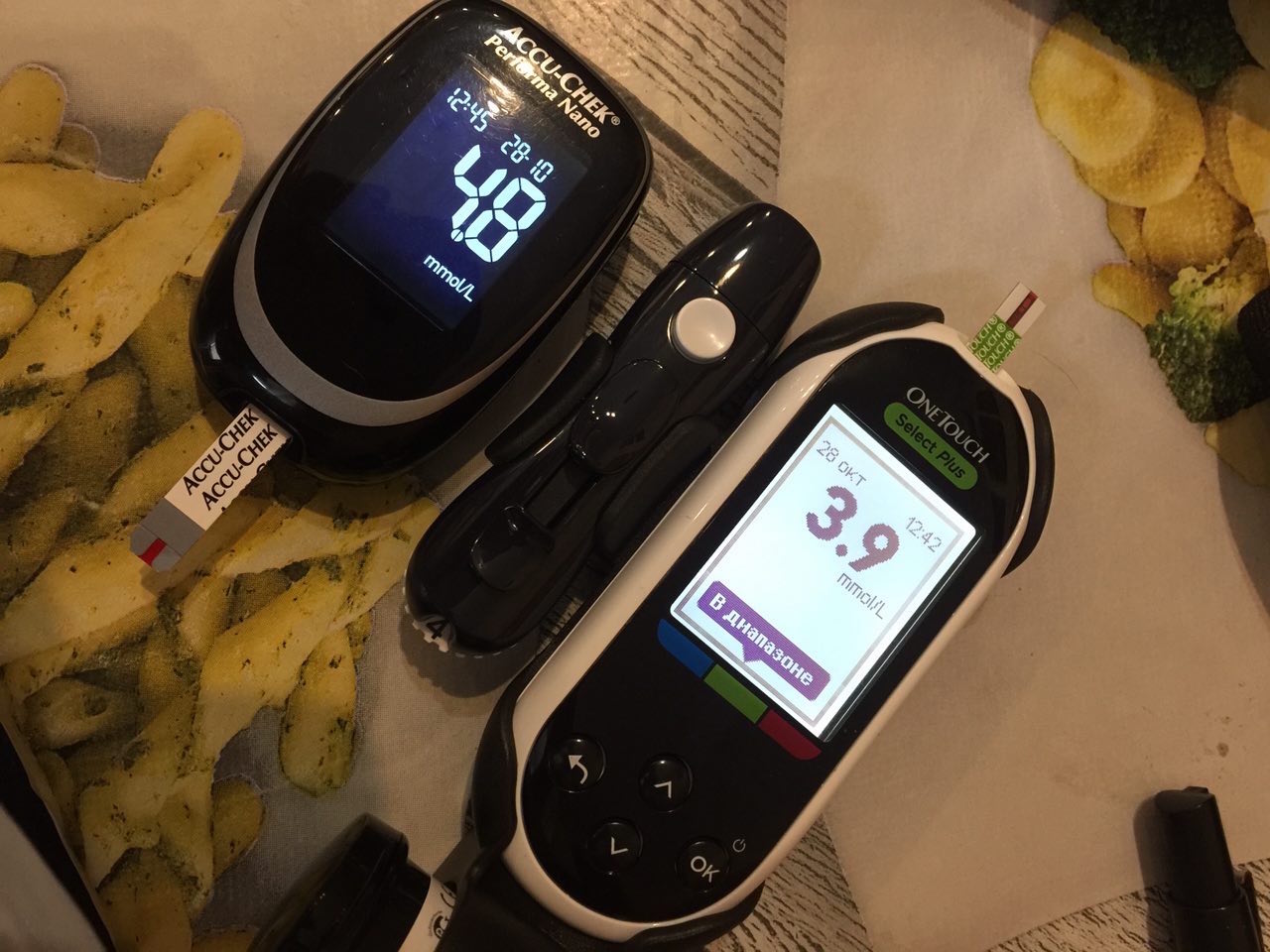
Which one is accurate and which one is not? Which one can be thrown out, and which one to use next? If you think this is an accident, then no. This is the system:
| Data | Glucometer 1 | Glucometer 2 |
|---|
| Blood | 5.2 | 4.9 |
| Blood | 5.6 | 5.7 |
| Blood | 2.7 | 3.0 |
Visually, this does not bother just because the numbers are small. But in some values, the “error” of one relative of the other is precisely the very 5%, the accuracy of which in weight / muscle mass / fat mass is so critical for many.
The table shows the data and a healthy person and diabetic. Now imagine high sugar, and you don’t have a pump with a step of 0.1, but a syringe pen in increments of 0.5 or per unit, and how much to prick?
Here, by the way, much more interesting problem. Diabetic after eating. One dimension shows that there is a tendency to grow, the second one - well, you see:
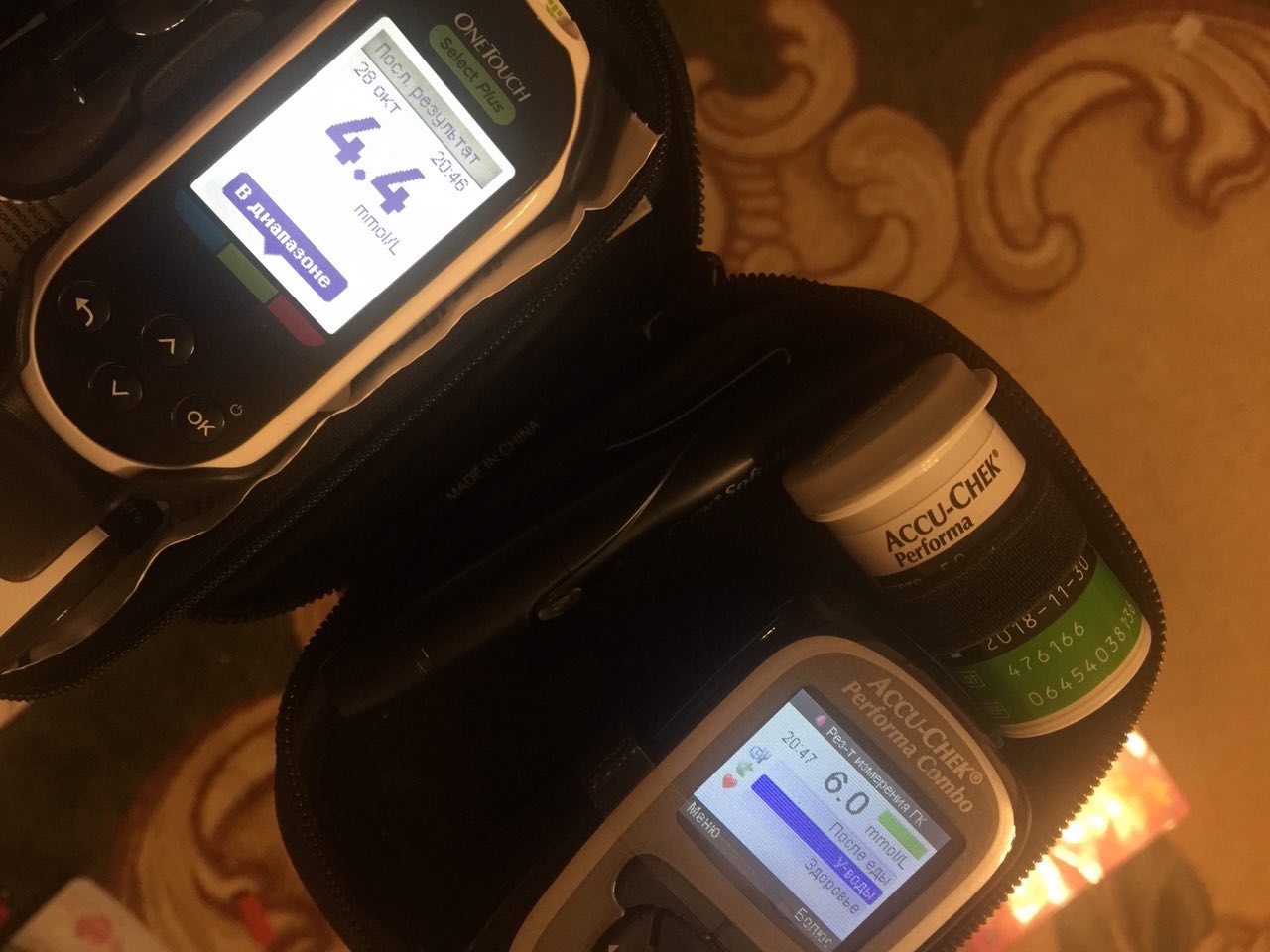
At the same time, the corridor of values is “green” in both cases, or more simply: sugar is normal. But apparently, many believe that the scales can not have this or should not, and if some show 50.1, and others 50.4 kg, a scandal should be expected. A question to the air: why all household measuring devices can be “inaccurate” and the scales are not?
As an intermediate total:- All household appliances have some uncertainty regarding the reference
- All devices are used for self-monitoring and trend tracking.
- This applies even to such parameters as blood, pressure, weight, etc.
- It is only the corridor of error that matters.
Standards for scalesFirstly, it is pleasant that many, as practice shows, already live in the world where a gadget worth up to 10,000 rubles should show as accurate data as a medical device worth several millions. Is the future somewhere there already?
Some in the comments were mockingly surprised that we consider two or three dimensions and comparisons to be sufficient. In fact - it is even more than necessary.
The task of comparisons is not to make the scales a “clinical diagnostic tool”, the task is much simpler - to see if a new product on the market does not show a random set of numbers or is it some kind of reality close to reality, and in what system of measurements they are given and whether there are grounds for using data in everyday life.
Yes there is.
Then, some noted that they were waiting for a comparison with other methods for assessing body composition. There is no point at all: the authoritative method (supermethod, supermethod, panmethod) is only one, and this is densitometry (DEXA). In other words, we do not need to be weighed in water, we do not need to look for the “Bod Pod” capsule - one analysis is enough, and we did it twice. Compare further - there is simply no sense.
The reference analysis confirmed several figures and confirmed that both the scales and other gauges are within the same notation according to the key measured parameters. And here - the most interesting.
Is there a single standard of measurement?And here is a question of choice: not all data can be compared with each other and with the DEXA study, if it is still considered that this is appropriate.
Each scale can give you different data under one name: remember the first table with the bone mass. In all three models of weights, we get bone mass, but in some cases this is the so-called mineral composition of the skeleton, and in the other - the weight of the human skeleton.
What scales are accurate? What are the right ones? Imagine that you first encountered this device and a set of concepts and immediately - two different numbers. What scales will you choose?
Both the mineral composition of bones and the weight of the skeleton have conditional norms and ranges. The first concept seems to have a little more value in the medical field. In any case, if we again return to the reference DEXA, then there is data on the bones in that designation.
| Data | Dexa | Scales 1 | Scales 2 |
|---|
| Bone mass | 2,773 kg | 2.5 kg | 11.2 kg |
Faced with such a spread for the first time, the desire to throw the "inaccurate" model of the scales into the garbage can arise immediately, although formally - there is no deception, and the scales show the correct data.
This applies not only to the concept of bone mass.
Recently, we talked about that, in principle, it is impossible to calculate the muscle mass of the body due to the fact that there are several concepts for its designation.
Unlike bone mass, there’s really nothing to compare with: DEXA shows Lean Body Mass, where fluid and connective tissues are included, and scales show Skeletal muscle mass, and the numbers are radically different.
We offered our own version of the analysis of these data, adjusted for several possible translations of the term lean Body Mass - as a lean body mass. In the analysis of DEXA between these two numbers is not such a big difference:
| Data | Dexa | DEXA 2 lessons |
|---|
| Lean mass | 51.4 | 64 |
| Lean body mass | 48.6 | 60.4 |
However, in terms of the lean mass, you can already find an opportunity to compare with the data that show the scales - there is such a parameter.
| Data | Libra | Dexa |
|---|
| Fat Free Weight 1 | 49,6 | 51.4 |
| Fat Free 2 | 66 | 64 |
Otherwise, how do you calculate muscle mass more accurately, faster, cheaper? This is again a rhetorical question for those for whom an error of five percent is critical.
Most of the matches in fat mass. The fact is that, despite the different diagnostic methods (X-ray and bio-impedance), they, according to several studies, can be compared in this parameter.
A sufficient amount of research was carried out on a different sample of patients, where they compared the data on fat mass obtained using bioimpedance and using DEXA - today it is possible to talk about the accuracy of bioimpedance on body fat mass with an accuracy of 3-5%.
| Data | Libra | Dexa |
|---|
| Fat mass in% | 37 | 38.6 |
| Fat mass in kg | 38.7 | 37,8 |
While we are still confident that the scales are able to demonstrate trends, although they do not have 100% sensitivity, but again, what about the weight?
Yes, these scales do not work: you can get up several times in a row and everything is differentSuch comments were met. It's a shame that without specifics and details, but such a request in this form can be answered unequivocally: it is impossible.
If you get up on the scales several times in a row under the same conditions, and the indicators are different, then you are out of luck. The only thing you can do is throw out your scales and choose new ones. All modern scales have such characteristic as "reproducibility of indicators". In addition, smart scales remember you by weight and with a difference of a few minutes they are capable of fitting. Here are a few numbers with a slight difference:

In the last picture data points on the same level. There are the same numbers everywhere in a small corridor of time. If your scales are not, then - alas. However, it is necessary to understand that the measurement conditions are the same, all scales stand on the surface of the same type, a person does not change position, breathes exactly the same way when getting up on the device, etc.
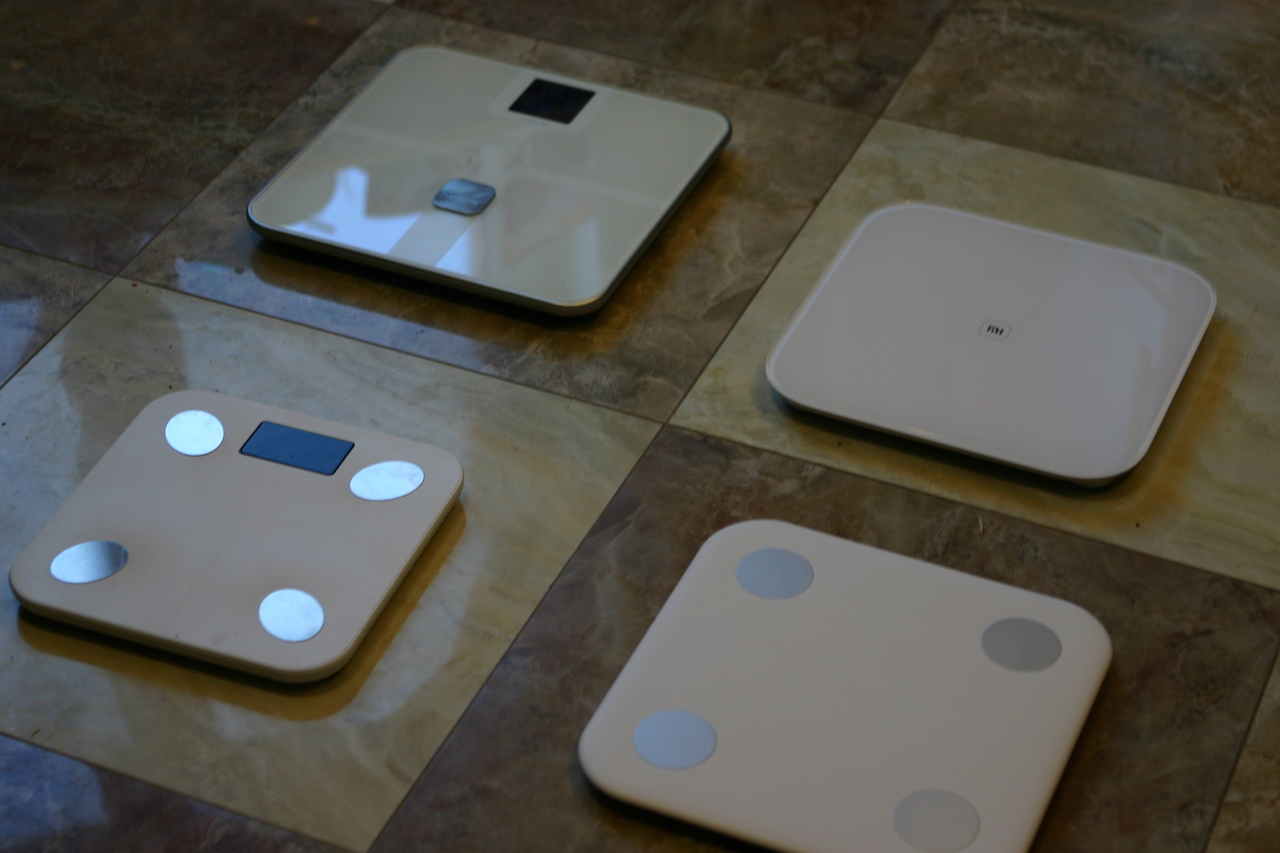
About the difference between the data. As you can see, the scales show a different weight, but all the weights are within the same range of values with a difference up to half the height. For example, if the situation was this: 63 kg, 63.5 kg and 70 kg, then yes, some of them are clearly lying. Here - all models of scales are accurate.
Different scales - different valuesIt is also a hoax to recruit classes. Of course, realizing that each model has a rounding step of one hundred grams, it must be admitted that there will be a slight difference in values. But these are not “completely different meanings.”
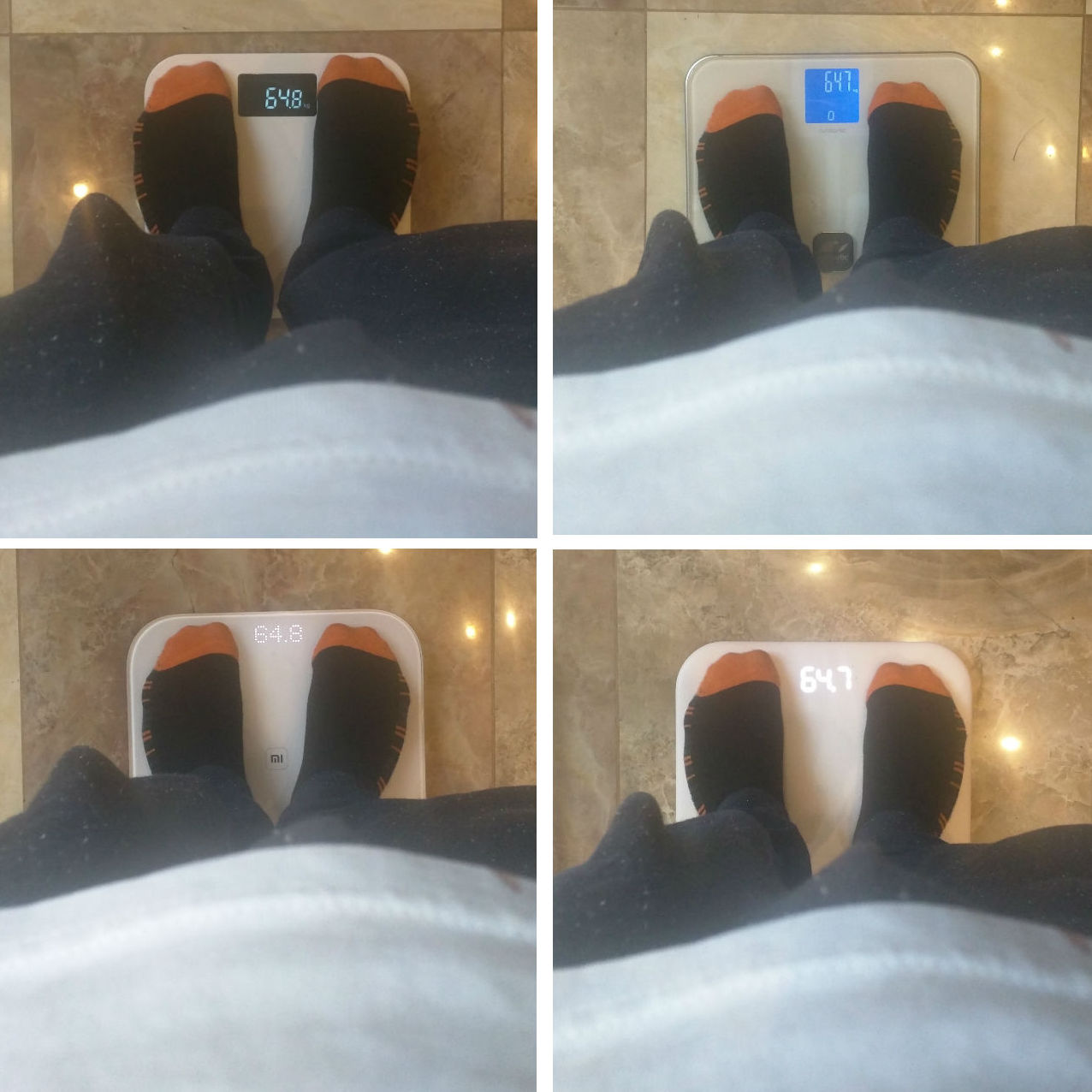
It’s another thing if some scales stand on a tile, second ones on linoleum, others somewhere on a not very even floor ... Then, perhaps, that the run will come out and more. If all models are put in the same conditions, then they "reciprocate."
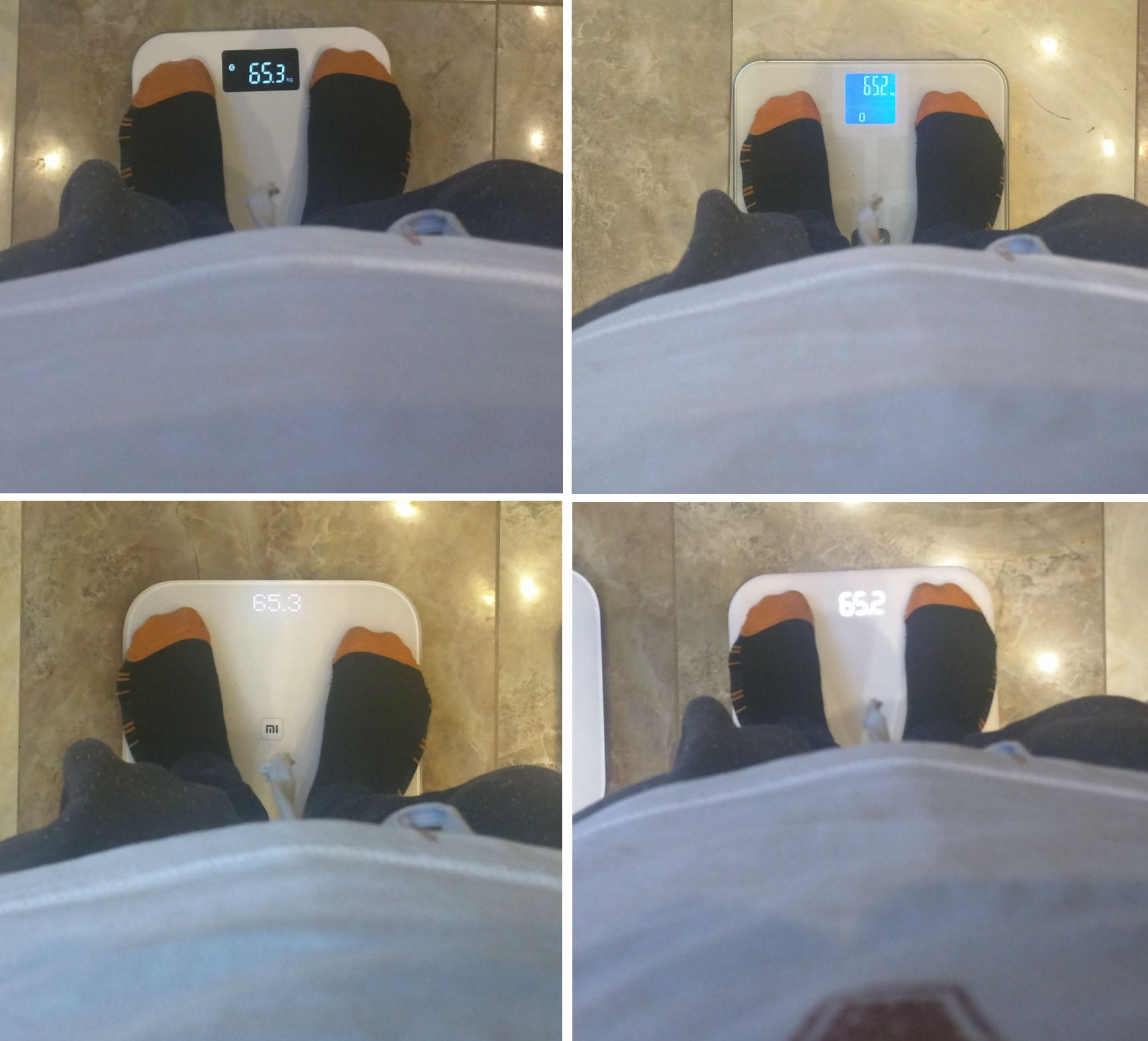
We do not pursue the goals of deceiving someone, perhaps the video will be more convincing:
As a small summary for this subsection- All scales can be called inaccurate or accurate depending on your desire. In this case, we must imply some rounding to 300 - 400 grams in one direction or another.
- Scales analyzers are able to show a number of other parameters at a sufficient level so that you can adjust the lifestyle or diet. In addition, you will critically evaluate these data by comparing with the same mirror, etc.
- Not all data on different scales can be directly comparable - the measurement system is different.
- Digital scales should have different data reproducibility and avoid dispersion between measurements in equal conditions.
Small digression about commerce on GeektimesIt makes no sense to make excuses - Medgadgets, apparently, unfortunately for many, this is an online store, and the administration of the resource gives us the opportunity to place commercial posts. Not all of them you like, but, running ahead, and in the final of this - you will receive a coupon.
However, we see that many of our proposals are used and for many they are attractive. At the same time, the possibility to sell certain scales here also does not affect the quality of the scales and does not make them inaccurate.
What else do analyzer scales show and what to believeIn the paragraphs above, we demonstrated that smart scales are able to analyze the composition of the body according to several indicators, the most popular of which are:
- Weight
- Fat mass
- Muscle mass
- Bone mass
In some scales there are others, for example: hydration, or water balance, visceral fat, etc. In some bio-impedance devices, the number can be cosmic - up to 50 indicators.
You need to understand that the verification tool is not. More precisely, you can compare smart scales with the so-called clinical bio-impedance meter and put two indicators alongside. However, is it worth saying that they will be close enough to each other with the same method of diagnosis?
From the words of an endocrinologist, for example, we learned that the indicator of hydration should be treated with caution: according to the doctor, only the water level in the body can be identified, apart from everything else, a rather problematic task. The water inside us does not hang in a special bag, and this is logical.
Also attention to visceral fat - in analyzer scales it is issued in the form of a conditional scale, in its measurement system! Some things in principle do not require any verification, because it is a calculator, for example, body mass index.
What if there is a calculator and allWe, as well as you, thought about it. Indeed, if you read materials on bioimpedance, then the method is still physico-mathematical, where calibration is important. Such methods enjoy a certain degree of mistrust.
For those who are trying to put a glass of water on the scales and calculate the percentage of fat: this is problematic for several reasons. First, the fact is that weights have a weight limit. Secondly, we tried to deceive them, even standing on the scales not “along”, but “across” could not be measured. Socks are a problem.
Also, the scales do not count anything, if you stand as if in the middle. In other words, if mathematics were enough, then most likely if we stand in the center, without touching the metal, we would get the same data, and this is not so.
How else can you cheat? We would need to get different values depending on gender, as some indicators, including muscle mass, for men and for women have different norms. Calibrated scales by floor:
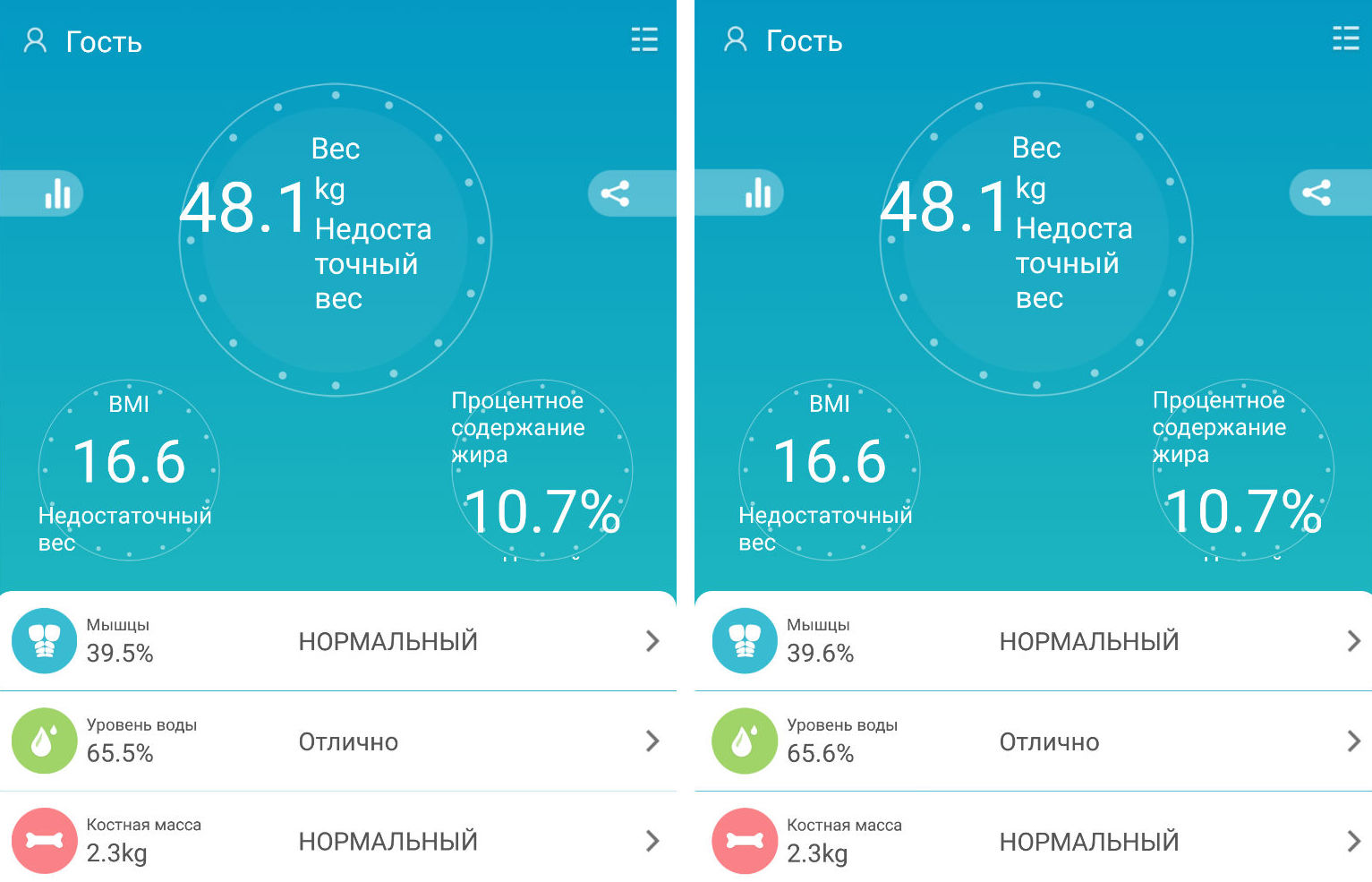
If the scales only had an intelligent mathematical algorithm, then, according to our logic, he would have to otherwise scatter the data,
adjusting it to the male and female norms when changing only gender. It turns out - not so.
Of course, the scales can most likely be somehow deceived, but the most trivial tests do not confirm this.
What they show there through the heels?It has been proven that bioimpedance can be of several “types”: hand to foot, hand to hand and foot to foot.
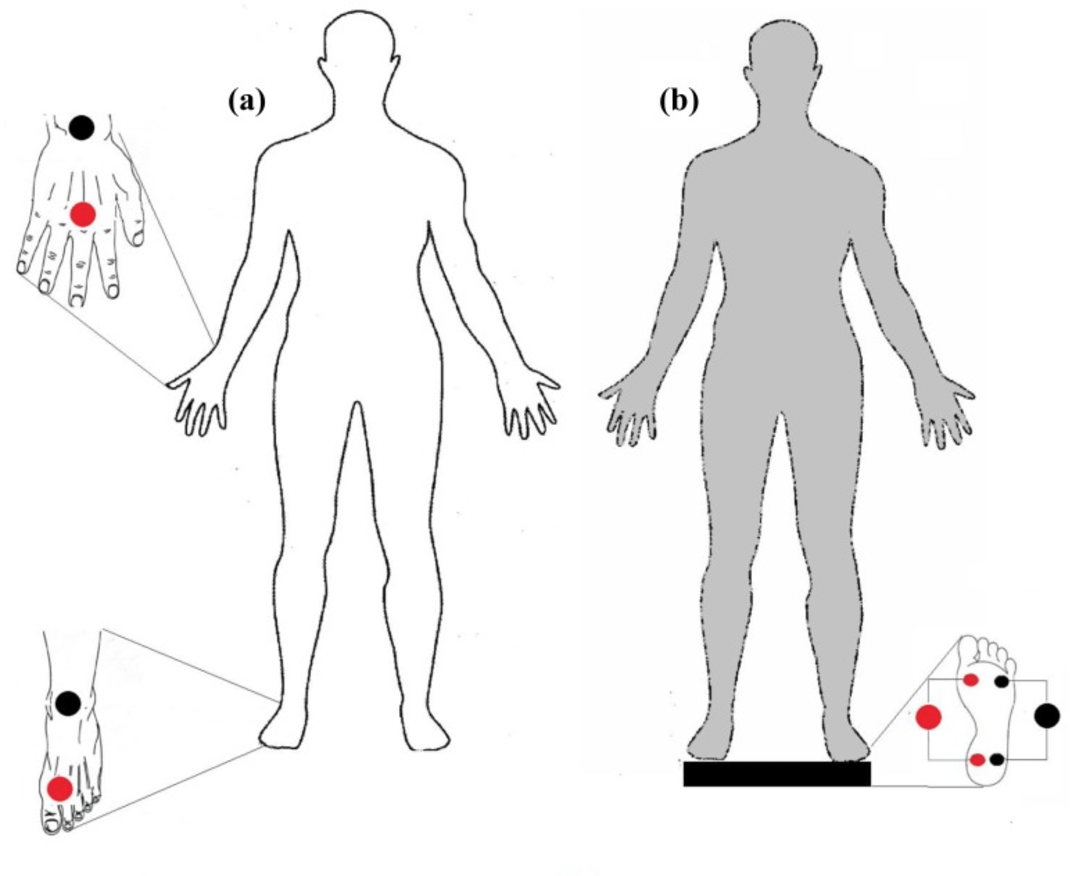
The scales through the heels, as the experience of Withings (Nokia) shows, can sweep both at the pulse and at the speed of the pulse wave. The value of this particular data obtained at a particular point in time is not completely clear, but, nevertheless, you should not be afraid that the contacts are only on your feet.
Who needs smart scalesSurprisingly, if everyone needs scales, one way or another, then not everyone will have smart analyzers.
But the alternatives of home appliances are also, admittedly, that is not. If you are swinging for the purpose of relief, then you will still recheck this data with a caliper, centimeter, etc. Relief is a visual thing.
To track trends by weight, mass index is a good tool, history will save data, you can watch how they change, etc. The only thing you need to understand, you should always have one source of information! As in the case with the meter, heart rate monitor, blood pressure monitor, thermometer ... You take one device and rely on its data.
Otherwise, you will assume that everyone around you lies, you will begin to believe in conspiracy theory, etc. You must also observe a number of conditions that are necessary when using such scales, otherwise ... "everyone lies, there is no accuracy."
What to buy? Of all the models tested for a long time (some you even saw in this material, were close at hand), it’s difficult to advise one thing: anyway, they all show roughly the same numbers, so the question of price and personal preferences remains. Let's say if you are a collector - you buy Runtastic, if you run marathons, you most likely have Garmin, and you buy Garmin scales, if you use something from Xiaomi, then too - the choice is predetermined and so on.
But be prepared that models for 10-15 thousand, and models for 2-4 thousand will show you the same numbers.
What scales are we promoting?After some time, tests and searches for our catalog, we stopped at the model, which is also familiar to you -
MGB .
Both in everyday life and in more difficult conditions, these scales proved to be stable and with their help you can control the weight and focus on several other indicators. They showed themselves quite accurately in comparison with a bioimpedance meter at the clinic:
| Data | MEDASS | MGB |
|---|
| Fat mass in% | 19.5 | 21.4 |
| Fat mass in kg | 12.5 | 13.6 |
| Muscle mass | 27.2 | 28.5 |
| Metabolism | 1555 Kcal / day | 1348 Kcal / day |
| Mineral composition | 2,652 kg | 2.5 kg |
And with a more complex reference study:
| Data | MGB | Dexa |
|---|
| Fat mass in% | 21.4 | 19.7 |
| Fat mass in kg | 13.6 | 11.9 |
| Lean mass | 49,6 | 51.4 |
| Metabolism | 1348 Kcal / day | 1427 Kcal / day |
And the second dimension with another participant:
| Data | MGB | Dexa |
|---|
| Fat mass in% | 37 | 38.6 |
| Fat mass in kg | 38.7 | 37,8 |
| Fat Free in kg | 66 kg | 64 kg |
| Metabolism | 1829 Kcal / day | 1673 Kcal / day |
Moreover, the measurement system in which this model works is more consistent with the clinical one (see bone mass).
No one is trying to position them as the most accurate in the world. They just - work and work well, in general, on the same level with models of famous brands, which makes possible their presence on the market as a household measuring device.
They have both direct and indirect competitors in price: there are now quite a lot of Chinese models - the choice is yours - with much louder names, this is true. Withings with the Nokia logo is recovering and recovering in some way, not to mention hundreds of Nouneyms. And with some of them, we also compared this model by weight:

And for other indicators, and where it can be compared (not everywhere), the scales were within the same range of values. For example, we already spoke about Runtastic and bones, so we can add about Xiaomi and muscles: the model of the second weights just defines the muscles, it seems, according
to the scheme proposed earlier by us , meaning lean body mass. For example, the weight of the muscles on an MGB scale may be approx. 30 kg, while on Xiaomi immediately 50 kg. Again, the problem is the measurement system.

In general, we found that the MGB model is understandable, and the metrics are close to “classical”, which is easier to understand and to draw any conclusions. In addition, it is convenient and compact - weighs up to 1 kg without a box, it easily fits in size in a small city backpack. Yes, and it looks quite on the level.
When applying for a discount coupon,
paying immediately , the scales become cheaper by another 500 rubles -
BPZMCC .
What are the conclusions formulated by usFirst by weights:- Scales - the category of household measuring devices for assessing the weight and in some cases other parameters of the body.
- In the "household field" it is incorrect to call some scales more accurate, others less accurate. All of them have a scatter in the range of 300 - 500 grams up and down.
- Find out the exact weight of the body in any other way at home is impossible.
- All devices, including those with a medical certificate, are used for self-monitoring and trend tracking and cannot have a clinical weight.
- To control the weight you need to choose one scale and monitor the weight only with their help.
Now everything else:- Most of the data for which the analysis is conducted, there are accepted norms. To fall out of them, you have to make an effort, otherwise the range of values will be normal. In other words, radical changes are always noticeable in large numbers.
- Amenable to verification due to differences in notation, or “measurement systems”. For example, if the scales for some reason show the weight of the skeleton, and not the mineral composition, then there will be difficulties. The same applies to muscle mass.
- Many data are conditional, and initially and still bioimpedance is used to determine what is associated with fat, so we suggest paying attention to indicators such as fat mass, lean mass.
Once again about 5%- There were individual statements about too large an error. It does not seem to us that they are fair, because everything has an error.
- There were statements about the fact that "my body is so constituted, and for me, 48 to 54 kg of dispersion is normal all the time, and I feel good." Sorry, scales - a mass product that can not take into account all individual cases. Yes, such users will only interfere with such devices, because, at a minimum, they will not recognize them when they are weighed.
- Several times in a row - different measurements. So it should not be. There is no such variation for all tested models, unless conditions change, place of weighing, etc.
For ourselves, we conclude is simple - most digital smart scales work correctly and show adequate numbers that are suitable for self-control and show the general dynamics of changes. Scales are no more difficult to do than tonometers and blood glucose meters, so today, most manufacturers are able to master this at a high level.
In addition to the models (under your feet) that you saw in this material, we are familiar with the scales of Ihealth, Withings, Polar, Garmin. And there, too, everything corresponds to the declared characteristics. As with the pressure measurement at home, when weighing it is also necessary to comply with certain conditions in order to improve the measurement accuracy, and this is not a limitation - this is normal.
If you need digital scales from the category of smart, you can choose any from 2 to 10 thousand and be sure that you are not making a mistake.